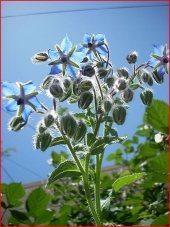
 1
1








find religion! church
kiva! hyvä! iloinen! pikkumaatila
get stung! beehives
be hospitable! host-a-hive
be antisocial! facespace
 2
2









 2
2








John Polk wrote:Yarrow (Achillea millefolium) is a medicinal herb, that greatly improves any plant that is raised for the essential oils.
The yarrow triggers an increase in oils in nearby plants, hence more flavor/aroma.
If you want mint that will 'knock your socks off', plant it amongst yarrow.
Most culinary herbs, likewise will benefit from the yarrow.
It is hardy to about zones 2-3.
 2
2





"May all things move and be moved in me and know and be known in me. May all creation dance for joy within me." Chinook prayer





 1
1
















 1
1




Together is our favorite place to be




Creating edible biodiversity and embracing everlasting abundance.









|
chirp chirp chirp tiny ad chirp chirp
The new kickstarter is now live!
https://www.kickstarter.com/projects/paulwheaton/garden-cards
|




